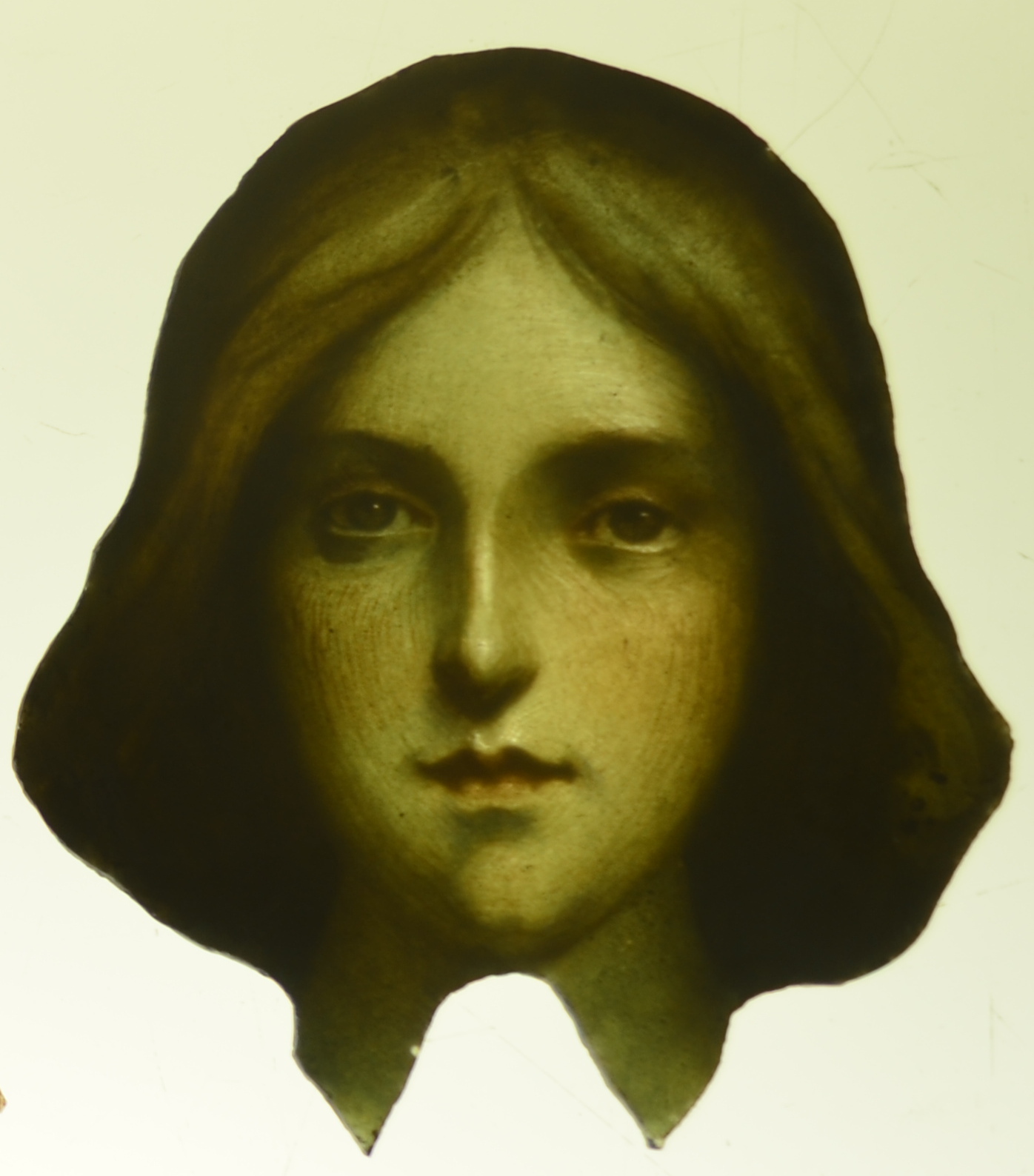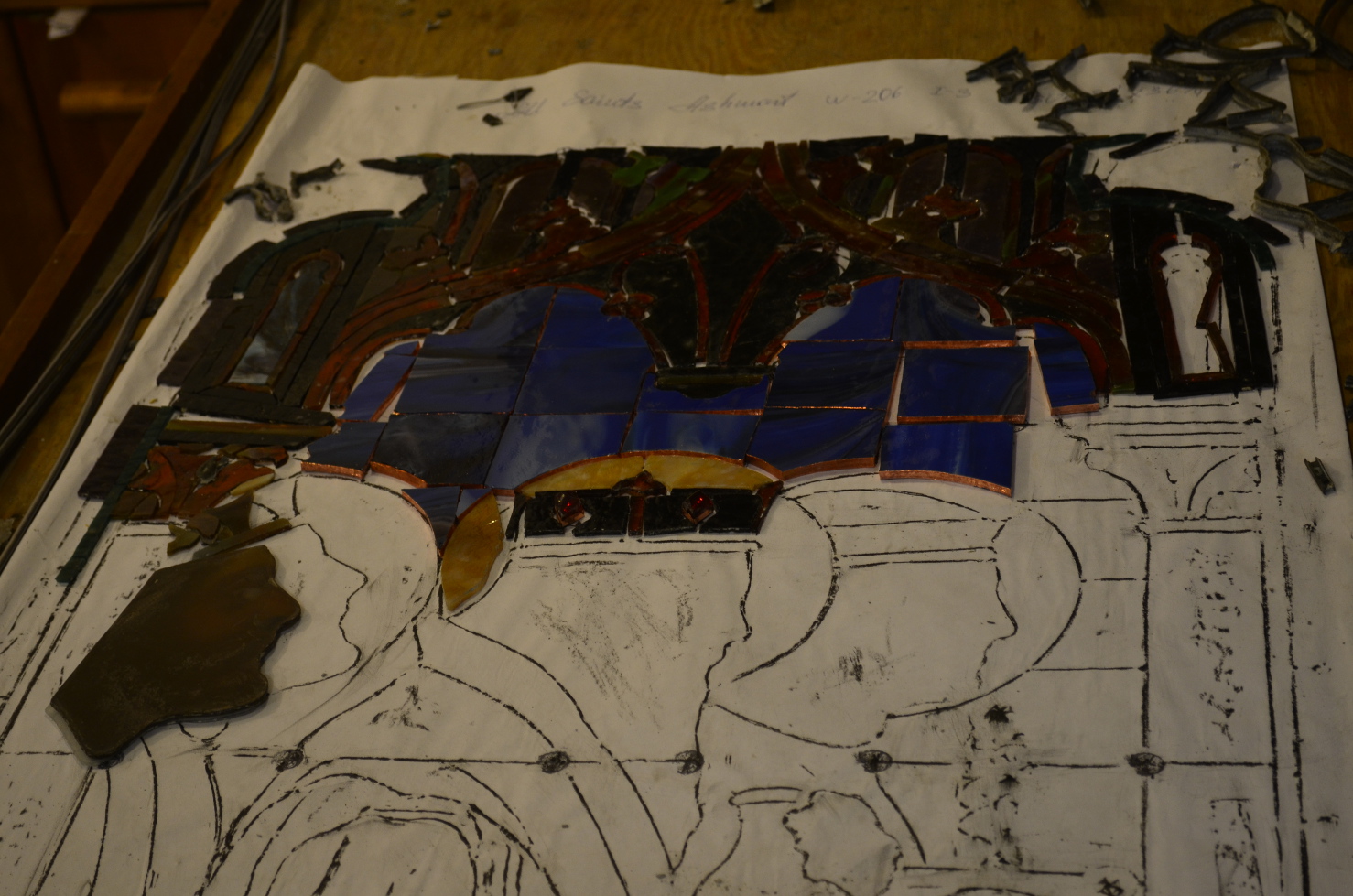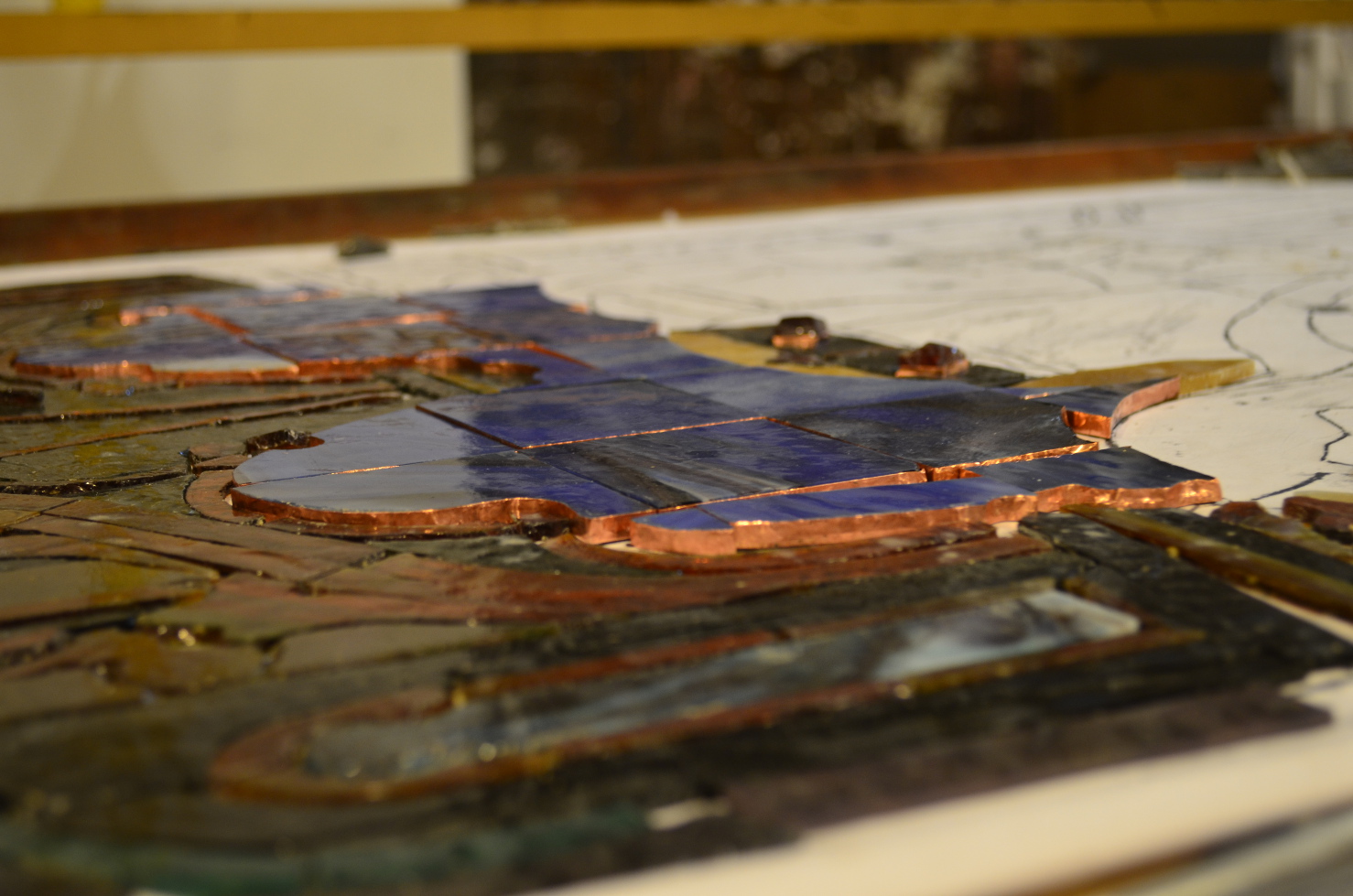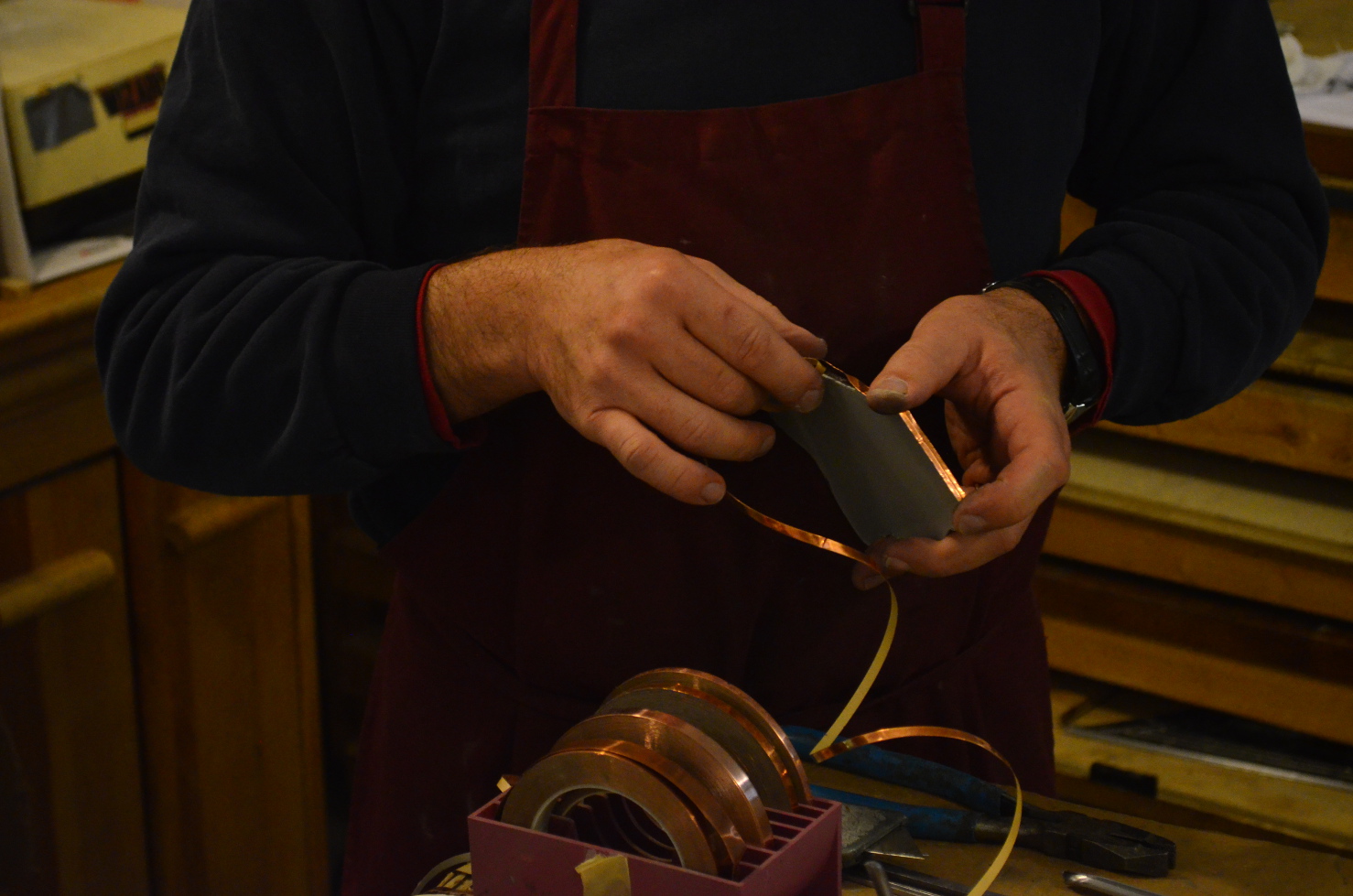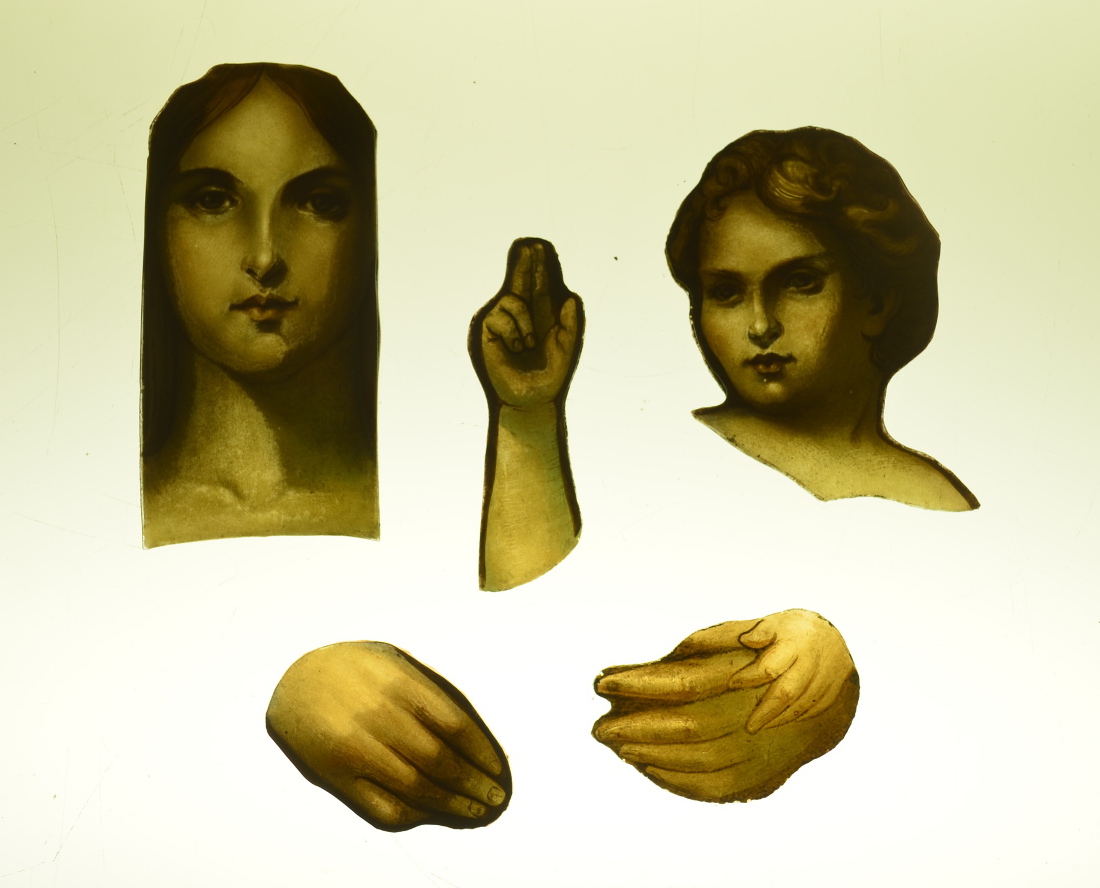October update on Goodhue's Window
The Lyn Hovey Studio, charged with the restoration of all the figural and cathedral glass in the nave and chapels at All Saints', is now hard at work restoring the last window–Henry Goodhue's the Adoration of the Magi and Shephards. See the early September update for a brief history and description of this window.
The undamaged face of the central angel. This was used to gauge the original values and shading of the damaged faces and hands of the mother and child.
Among the depredations suffered by this window was the "scarring" on the faces and hands of the central figures of the mother and child. The paint used for these features has failed substantially. Our Lady seems to have contracted alopecia at the central part in her hair and a biblical leprosy on her face, neck, and hands. The Christ Child seems similarly afflicted.
The In Tray and the Out Tray. On the right are the pieces from the unzipped panel, depicting the Magi, that remain to be set into cames in the assembled panel shown on the left. On the right, notice the copper-edged, plated pieces of lapis lazuli sky above the kings' heads.
The restoration technique for this is complicated and challenging. It is important to preserve the historic material of the window. So the remedy for these visual defects caused by age and dirt is to do no more than clean the original glass. Instead of repairing the defects directly, a new layer of glass will be plated to the interior of side of these pieces. These new pieces have been reverse painted with line detail and matte painting to visually supplement the areas of paint failure in the original glass.
Another view of the edges of the plated pieces of sky. On the right, copper tape being applied.
It is a particularly difficult challenge to restore the work of the original artist, for the second, restoring artist must paint the new glass to exactly match the painting on the existing glass. This painting is reverse to the original composition and the artist must add only so much as will restore the original definition and value intended by the window's first artist, without overwhelming the original work.
Reverse-painted glass for the faces of the mother and child and for his blessing hand. The mother's hand has already been plated with its reverse-painted repair. The glass piece depicting the two hands has not yet had a repair painted.
Here the painted glass has been set on top of the damaged historic glass forming a sandwich, with the old and newly painted surfaces in the center, protected against future infiltration of dirt by copper tape laid around the edges. Placed on a fluorescent light table, this photograph suggests the appearance when re-installed. This same technique will be used in a more speculative way in the restoration of the more greatly damaged architects' window.
Once the reverse painting is complete, the new piece is plated to the original piece, and copper tape is applied to edge of the two pieces before being reinserted into new lead cames. In fact, throughout this window, in every place where the original craftman employed two-, three-, or four-ply of glass, these edges will also be sealed against infiltrating dirt.

